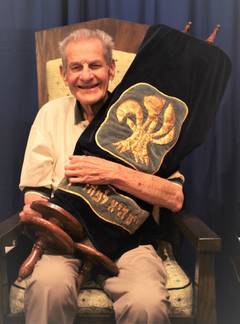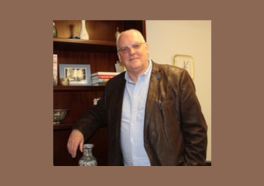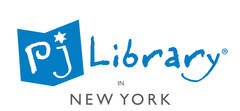- About Us
- Connect
- Learn
- Jewish Life
- Music
- Events
- Give
- Join Us
intruder - Rosh Hashanah 2019/5780
10/01/2019 12:57:06 PM
Rabbi Jennifer Jaech
| Author | |
| Date Added | |
| Automatically create summary | |
| Summary |
This summer I spent a few days in the North Cascade mountains of Washington State. My friend Red lives out there. She owns the stable where I ride. This year we saddled up and rode out together on the first day of my visit. It was a perfect morning. Sunlight angled through the thick pine trees, and the air was cool and fragrant.
As our horses walked through the trees, Red filled me in on the news of her stable and its horses and wranglers. Then she asked me: “So, how was your year?”
I told Red about how Temple Israel’s doors are always locked now. How we need to have a security guard. How we watch out for suspicious vehicles in our parking lot. “This is the new reality,” I said.
Red gave me a puzzled look. “You know, after Pittsburgh,” I added.
Red hadn’t heard about Pittsburgh. The news that shook our world last November did not reach her. I knew that Red worked very hard and she didn’t always keep up with the news. But still, I felt shocked. I also felt a little envious. Red didn’t have to worry like I did.
So I told Red about Pittsburgh and about Poway. I told her about the white supremacist flyers posted in Croton, and the swastikas in Somers. I told her that Jews feel targeted for violence. Red listened carefully. This was all news to her.
As soon as I finished speaking, Red said “I just got my permit to carry a gun.” Right away, she explained that she did it for protection against a rising cougar population. On a nearby ranch, a cougar had killed a miniature donkey. In another town, a cougar attacked a boy playing by a river at a town park. And just last year, a cougar attacked two mountain bicyclists, killing one of them.
Before that moment I hadn’t considered the danger from cougars. Was there a predator watching us as we moved through the trees? My horse’s ears swiveled and moved back and forth, listening for danger.
Cougars on the trail. Swastikas in the cities. Threats are everywhere.
For much of my life I have not lived under the threat of predators, whether animal or human. I heard about assaults and murders on the news, but I did not live in fear.
That changed when I was an undergraduate student, attending The Evergreen State College, a progressive and peaceful campus in Olympia, Washington. One morning, a gunman walked into the cafeteria and shot a young woman dead as her friends watched, horrified.
The night of that shooting I could not sleep. Through my window the street light cast moving shadows on my walls. What caused the movement of those shadows? Did I hear a creak? A soft intake of breath? The brush of fabric against a doorframe? I tensed and imagined the moment before that morning’s gun shot: the muzzle pointed and the air electric and foreboding, like the second before lightning flashes.
Although I was completely alone, I knew an intruder had invaded my home. Fear had intruded. Fear can penetrate even the strongest of deadbolts.
Some of you might remember the air raid drills you did in school. As a child, I lived in a town bordering a nuclear reservation. The fear was that this reservation would be attacked. I remember filing into a darkened windowless hallway with my kindergarten classmates and lying on the floor in silence. This was how we were to prepare for bombs falling from the sky.
Today in Temple Israel’s CJL, our religious school, we have drills of a different sort. They are called “lockdown drills,” meant to prepare us in the event of an armed intruder. Intruders find fewer targets if they encounter locked doors, shades pulled, darkened classrooms, and children huddled out of sight.
The first time we did a lockdown drill at Temple Israel, I wanted to be with the youngest children. If the drill frightened them, I thought my presence might provide some comfort.
“This is a lockdown, this is a lockdown,” came the announcement over the intercom. The kindergarteners silenced their chatter and moved to the corner of the classroom. A few whispers and “shh, shh” came the reminder from the teacher. Crouched on the floor, the kids looked at each other, some serious, others stifling their giggles. I noticed one girl twisting the end of her braid, silently watching me, as if waiting for a cue. My expression would signal to her whether she should be afraid.
My instinct as a rabbi is to be reassuring. And at the same time, rabbis are bound to tell the truth. I’m not the same as my friend Red, alone on the trails with a gun in her holster. I’m entrusted with the welfare of a sacred community, a community whose members I love. Sometimes I fear that I am not equipped to know when to reassure and when to sound an alarm.
To be human is to live with fear. This is nothing new. It’s reflected in a midrash, a story from our ancient rabbis. The midrash is about the first human, Adam. The rabbis imagined that Adam entered this world oblivious to its ways.
In the rabbinic story[1], on the day of his creation, Adam had no reason to believe that the sun that gave him warmth and light would ever depart from the sky. As the day wore on, Adam noticed the shadows grow longer and the sky darkening. Adam grew afraid. Creation had begun with light, and now that light was fading. When the sun sank, and the sky grew dark, Adam fasted and wept. Eve stayed with him the entire night.
When the sky slowly grew lighter with the dawn, Adam realized, “this is the way of the world.” It is the way of the world to have these patterns of night following day, darkness following light and light returning. There is no stasis. We live in a continuum of sunlight and shadow.
Adam’s experience is ours today. We have lived through a day of prolonged sunlight in a country in which we felt safe to be Jews. Now we now see the shadows of old hatreds lengthening.
So how do we cope?
I carry one image in my heart of this past year. It’s the image of this sanctuary, crowded with people, too many to contain even way back in the oneg room. On the Shabbat evening service after Pittsburgh, I stood on this bima and saw many of your faces. And I saw many, many other faces. I saw the faces of our friends. I saw the faces of our neighbors, our elected officials, our police officers. I saw the faces of people from many faith traditions, and the faces of those who follow no faith tradition. Together we sang “Olam Chesed Yibaneh -- We Shall Build This World from Love.” We are not alone.
We are connected to all the good people who condemn violence and hate. We are connected to our neighbors who embody every hue of human color, ethnicity and identity. And we are connected to all who have been targets of violence and hate. We are connected to our fellow Jews, to those who live today and to generations that came before us. We are connected to the church goers, the mosque goers, the students in universities, high schools, elementary schools; the Walmart shoppers, the protesters, the movie goers, and the country-music fans. In the darkest moments, we are not alone.
We endure the darkness by reaching for the hands of those who stand with us. In the midrash, when Adam saw the sun return to the sky, he gave an offering of thanksgiving to God. The story suggests that he did this because of his new understanding of the “way of the world.” But I believe that Adam gave his offering of thanksgiving because Eve stayed by his side throughout that dark night.
This is the way of the world: Darkness falls and darkness fades. We give thanks for those who stay by our side. O little girl in the lockdown drill, the girl who twists her braid and watches me, this is my promise to you: Morning’s light will dispel the darkness. And until it does, I will not leave your side.
[1] Avodah Zarah 8a
Thu, April 24 2025
26 Nisan 5785
Temple israel Happenings
-
Thursday ,
AprApril 24 , 2025 County-Wide Yom HaShoah Commemoration
County-Wide Yom HaShoah Commemoration
Thursday, Apr 24th 12:00pm to 1:00pm
County-Wide Yom HaShoah Commemoration at the Garden of Remembrance, 119 Martine Avenue in White Plains. Temple Israel's rescued Holocaust Torah scroll will be part of the procession of scrolls from Westchester county, and Cantor Hayley Kobilinsky will participate in the program. -
Tuesday ,
AprApril 29 , 2025 Sisterhood Book Group
Sisterhood Book Group
Tuesday, Apr 29th 6:00pm to 8:30pm
NEW DATE! We will be discussing the book "The Frederick Sisters Are Living the Dream" by Jeannie Zusy in person at a congregants' home. The author will be joining us for the discussion. We will have a Pot Luck Dinner to start -
Wednesday ,
AprApril 30 , 2025 Holocaust Education Today: Challenges and Limits by Dr. Werner Steger
Holocaust Education Today: Challenges and Limits by Dr. Werner Steger
Wednesday, Apr 30th 6:00pm to 7:30pm
Dr. Steger serves as the endowed chair for the Greenspan-Handel Trust for Holocaust and Genocide Studies. -
Saturday ,
MayMay 3 , 2025 Midnight Run
Midnight Run
Shabbat, May 3rd 1:00pm to 4:00pm
Volunteers needed. The Midnight Run is a volunteer organization whose goal is to come together as a community in order to feed the homeless of New York City. They coordinate more than 1,000 relief missions per year with volunteers from churches, synagogues, schools and other civic groups to deliver food, clothing, blankets and personal care items to the homeless poor on the streets of New York City.
Events
Today's Calendar
| Yom HaShoah |
: 12:00pm |
: 7:00pm |
Friday Night
: 7:00pm |
Shabbat Day
: 9:30am |
Upcoming Programs & Events
Apr 24 |
Apr 24 |
Apr 29 |
Apr 30 |
May 2 |
This week's Torah portion is Parashat Sh'mini
| Shabbat, Apr 26 |
Yom HaShoah
| Thursday, Apr 24 |




